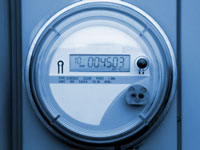Demand Response Assessment
Demand response (DR) is defined as changes in electric usage by demand-side resources from their normal consumption patterns in response to changes in the price of electricity over time, or to incentive payments. The goal of DR is to reduce electricity use at times of high wholesale market prices or when system reliability is jeopardized. DR programs by utilities may offer customers an incentive to reduce or shift their peak load to a specific time of day.
DR assessment may include estimating the demand response potential and/or evaluating the effectiveness of demand response programs. EES Consulting has the expertise to evaluate both the potential for and effectiveness of demand response.
Western Public Agencies Group
EES Consulting (EES) has outlined direct load control technologies and the associated potential peak demand savings for WPAG utilities. Direct load control is a specific kind of demand response where technology cycles or shuts down customer equipment during peak load events in order to reduce demand charges and the need for new capacity. Residential heating, cooling, and water heating, are specifically addressed by this report. While direct load control is not a new idea, it is currently gaining momentum due to improved technology, changing wholesale power prices and successful pilot programs in the Pacific Northwest Region
City of Port Angeles
The City of Port Angeles has a variety of demand response pilot programs underway in conjunction with the Bonneville Power Administration. EES Consulting is providing the process and impact evaluation for these projects.

